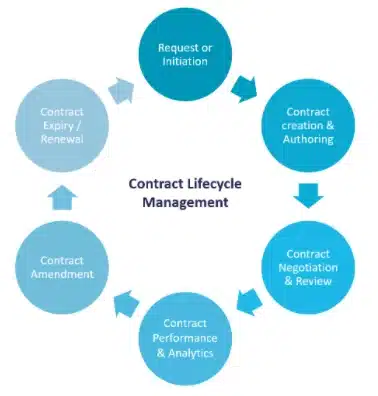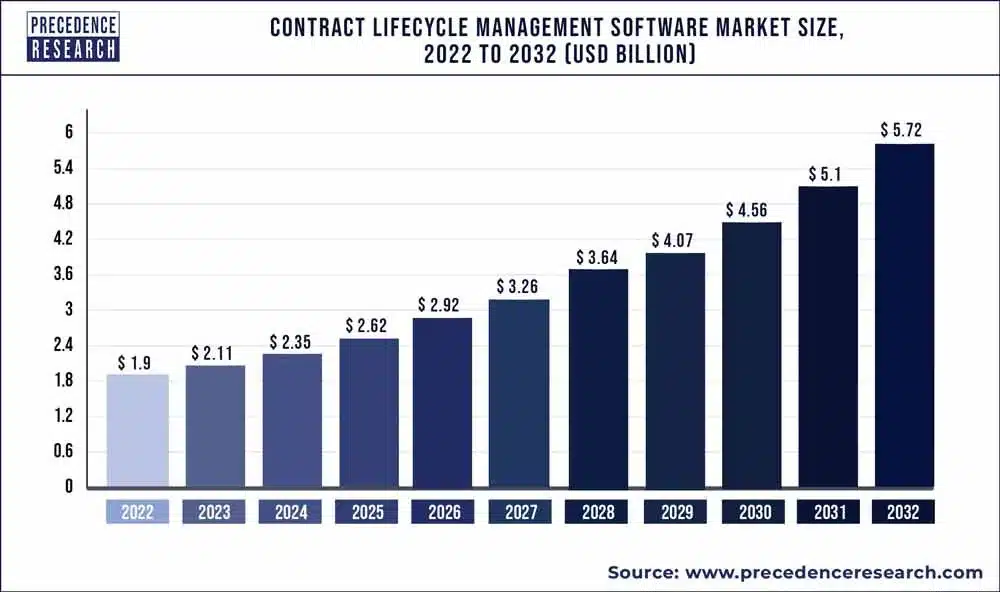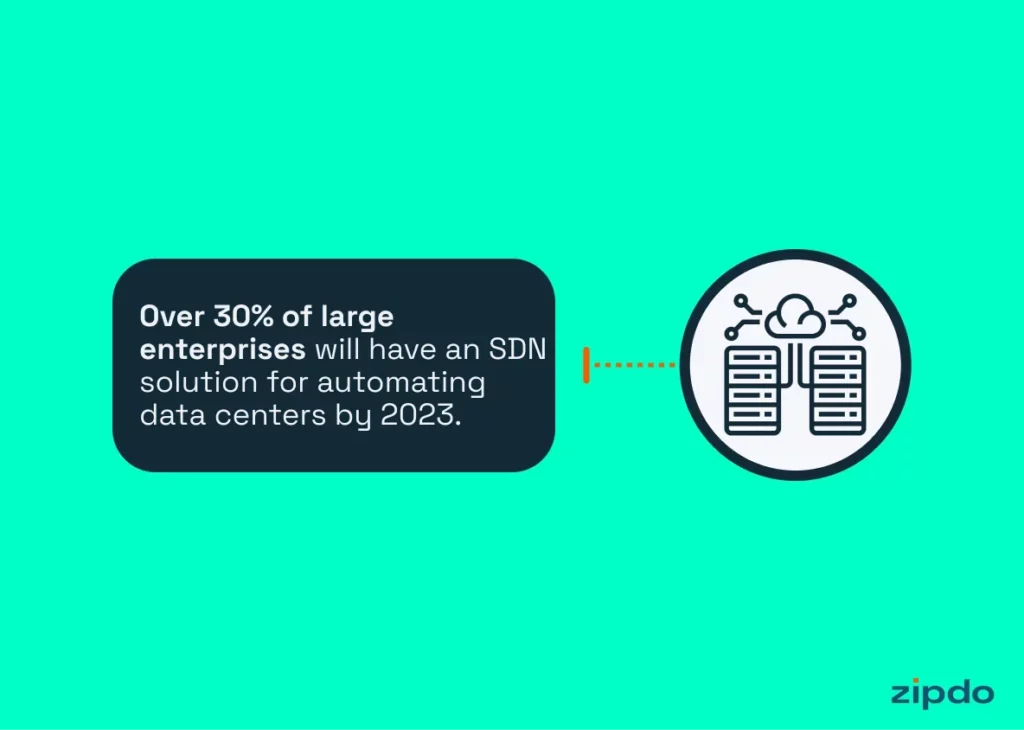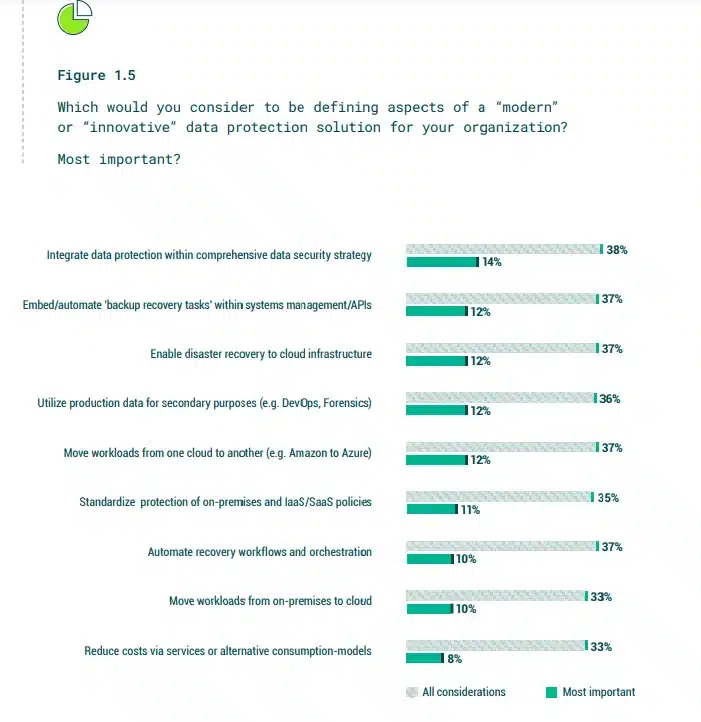Your business enters into a range of contracts every year and many of these may be with customers. SaaS businesses, for example, enter into subscription and service-level contracts with new and renewing customers. These contracts contain important contract data that can be not only useful but vital to your business’s decision making.
This article covers how you can collect, organize, and analyze contract data. We’ll cover the benefits of this process and offer a detailed step-by-step guide so that you can implement contract analytics today.

Image sourced from ivalua.com
What is contract data?
Contract data is information contained in contracts or legal agreements. This data can cover a wide range of details, such as contract terms and conditions, personal details of both parties, and contract values. This data can be gathered from different kinds of contracts and agreements, including business contracts, service agreements, and employee contracts, using technology like streaming data ingestion.
Some typical data collected from contracts includes:
- Contractual parties: Names, addresses, and contact details of the contract manager or vendor and the customer or client.
- Terms and conditions: The rights, obligations, responsibilities, and expectations of each party.
- Contract duration: This includes the start and end date.
- Payment details: The payment terms, amounts, frequency, and method of payment.
- Scope of work: The products, services, or deliverables to be provided under the contract.
- Renewal and extension terms: What happens when the contract ends and how will it be renewed?
What are the benefits of capturing contract data for SaaS businesses?
- Data-driven decision making
With contract data, your business can get insights into important details like customer preferences and usage patterns, as well as overall market demands. With this data in hand, you can use it for making data-driven decisions for a range of strategies, from marketing to contract negotiations.
- Optimized pricing

Image Sourced from HubSpot
By analyzing contract values and terms, you can optimize your pricing models. Contract data provides a granular view of how customers engage with different features or tiers of your SaaS product. Analyzing this information allows you to understand the value perception of each component, guiding you in adjusting prices to align with customer expectations.
- Regulatory compliance
Any business that enters into contracts with clients or customers should be aware of the legal and regulatory compliances that come with business contracts. Gathering and regularly analyzing contract data will help you be alert to any potential legal risks or contractual disputes, creating an audit trail for accountability.
- Responsive product development
Customer needs and preferences are vital for developing new or upgraded products. Contract data analysis can help you discover these needs and you can pay attention to what actual user requirements are. You can also use this data to create prioritization frameworks for deciding which functions are essential and what could be deferred for future releases.
- Proactive renewal strategies
Contract data helps you predict renewal trends and customer churn patterns. With this information, SaaS businesses can implement proactive strategies to retain customers. These might include targeted communications with feature enhancements or personalized incentives. You can also use this data to help with renewal negotiations based on patterns such as time of year or past user behavior.
- Competitive advantage
SaaS is a competitive market and companies need all the data they can collect to ensure they have the edge over competitors. Not only can contract data ensure you provide customer-centric offerings and optimized pricing to beat competitors, you can also use it to develop differentiated features and services.
For example, contract data often outlines specific commitments made to customers. By customizing features and services based on these commitments, you can demonstrate your dedication to meeting individual customer requirements, creating a tailored experience that sets you apart from competitors and help build brand awareness.
How to collect and analyze contract data: A step-by-step guide
- Create a centralized contract repository
All contracts should be held in a digital repository that is both secure but also accessible to those who need to analyze its data.

Image Sourced from Precedence Research
- Choose a contract management system (CMS): Research and select a CMS that suits the needs and scale of your SaaS business and consider whether you’ll need accelerated data tools.
- Define access permissions: Set up user roles and permissions within the CMS. Define who can access, edit, or approve contracts to ensure data security.
- Import existing contracts: Transfer existing contracts into the CMS and ensure accurate data migration and categorization.
- Use version control: Version control allows you to to track changes made to contracts over time. This ensures that the most recent and accurate information is readily available.
2. Develop a standardized contract template
Your contracts should have a standard format with key data fields remaining the same across the board. This will help you extract and analyze contract data.
- Identify key data fields: Determine the critical information you need from contracts, such as contract duration, pricing details, and service level agreements (SLAs).
- Create a template: Develop a standardized contract template with predefined fields. This ensures consistency across all contracts.
- Provide instructions for employees: Include clear instructions for contract creators to fill in the standardized template. This minimizes errors and ensures comprehensive data collection.
3. Automate data extraction
Rather than rely on manual efforts, make use of technology that can automatically extract information from key data points and even sort it for you.

Image Sourced from Zipdo
- Select automation tools: Choose a CMS that offers automated data extraction features. You should look for solutions that integrate seamlessly with your existing systems and offer a user-friendly interface and look into alternatives to a Snowflake schema example.
- Configure automation rules: Define rules for automated data extraction. Specify which data points are to be extracted, such as contract dates, parties involved, and pricing details. Then specify the conditions under which data extraction should occur. For example, you may want to extract renewal dates only for contracts set to expire within the next 90 days.
- Test and refine: Conduct tests to ensure the accuracy and efficiency of automated data extraction and refine rules as needed.
4. Categorize and tag contract types
It’s likely that you have different types of contracts that your business uses. In order to effectively analyze contract data, these different types of contracts need to be sorted and tagged.
- Identify contract categories: Determine the different types of contracts relevant to your SaaS business, such as subscription agreements, service-level agreements, and partnership contracts.
- Create tagging system: Establish a tagging system within the CMS to categorize contracts.
5. Use data analysis tools
Your data is collected and sorted — it’s time to analyze it. You don’t need to do this alone, there’s technology out there to streamline the process.
- Select analytics tools: Choose tools that integrate seamlessly with your CMS and have easy-to-view dashboards and reports. Then connect your CMS to these tools.
- Define key metrics: Identify the key performance indicators (KPIs) and metrics you want to track. Common metrics include contract renewal rates and revenue per contract.
6. Prioritize data security
Both customers and privacy regulators expect you to protect data, so it’s vital you put security measures in place.

- Assess security protocols: Evaluate the security protocols of your chosen CMS and ensure that it aligns with industry standards and complies with any local or national data protection regulations.
- Implement encryption: Enable encryption for sensitive data within the CMS so you have an extra layer of protection against unauthorized access.
- Conduct regular audits: Periodically audit the security measures in place and identify and address any vulnerabilities.
7. Create customized reports
Reports should be tailored to meet the needs of specific teams or stakeholders. For example, your sales teams might need revenue-focused reports, while legal teams will want compliance reports.
- Identify team and stakeholder needs: Determine the specific needs of different teams and stakeholders, such as executives, sales teams, marketing teams, and legal departments.
- Choose reporting tools: Select reporting tools within your CMS or integrate external tools that allow customization. Ensure that these tools cater to the unique requirements of each group.
- Design tailored reports: Design reports that present relevant data for each group. You should customize visuals, key metrics, and filters to provide actionable insights for those using these reports.
8. Regularly review
Analyzing contracts isn’t a static process. Just as you regularly review your SaaS website, you should always be auditing, reviewing, and updating your contract creation and data collection and analysis processes so that you can keep up with your changing business and customers.
- Establish an audit schedule: Start by setting a schedule for regular contract audits. This could be quarterly, semi-annually, or annually.
- Conduct thorough audits: You should always perform comprehensive audits of contract data — don’t cut corners. Verify accuracy, identify discrepancies, and ensure that contracts align with your business’s quarterly and annual goals.
- Document findings and take action: Create a report for every audit and then take action to improve any weaknesses or vulnerabilities. This might include updating contract terms, addressing compliance issues, or refining data collection processes.
Conclusion: Make contract data work for you
You may already be collecting data from customer feedback surveys or online reviews, but there’s a wealth of data available to you in your business contracts that you can make use of.
Business decisions from product development to pricing can all be influenced by data collected from contractual agreements, so don’t let that data go to waste. Collect it, protect it, and analyze it for future gain.




